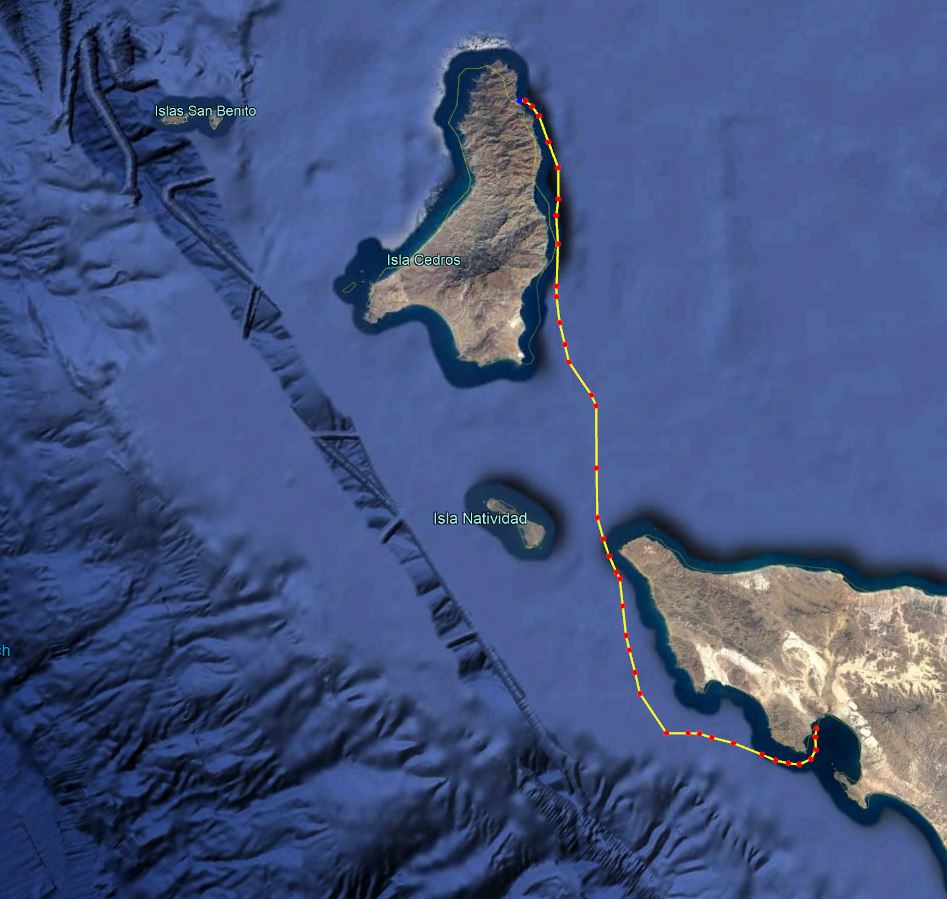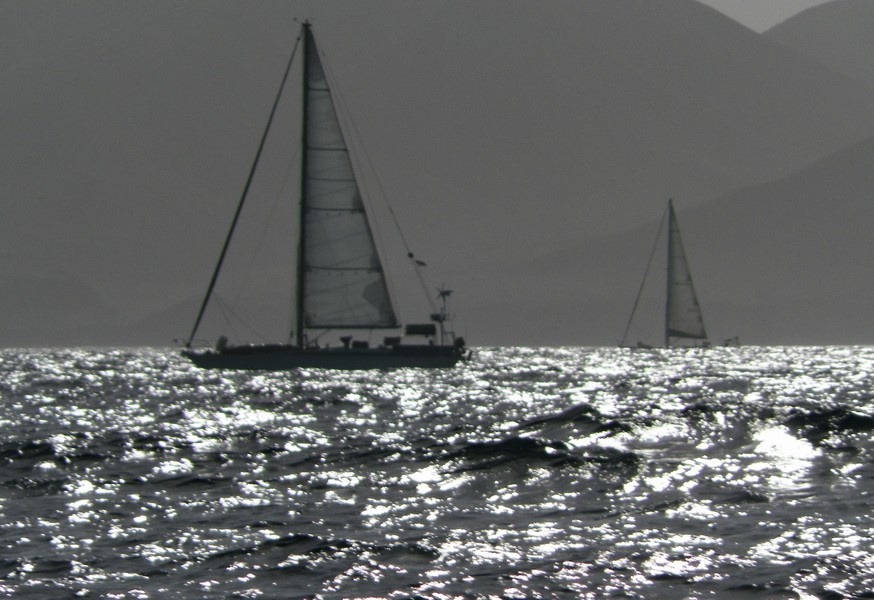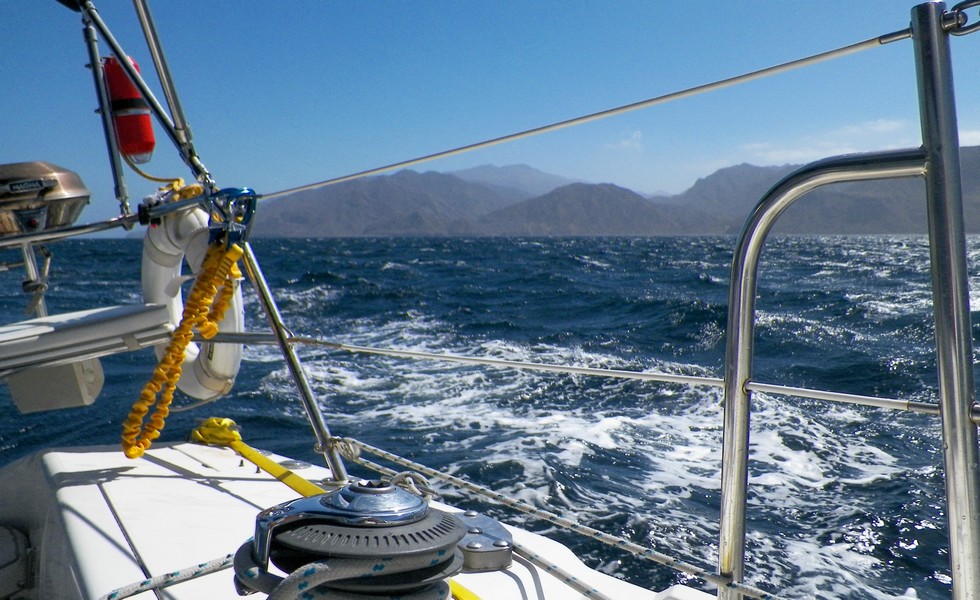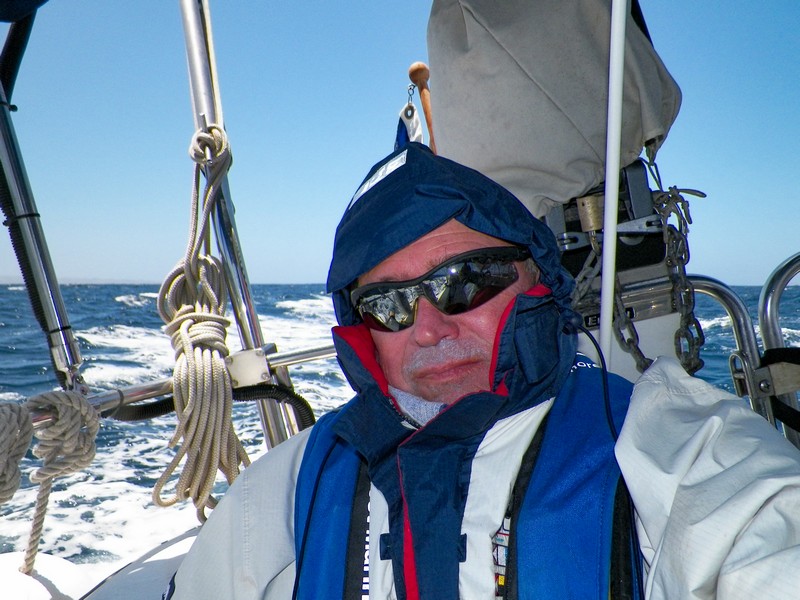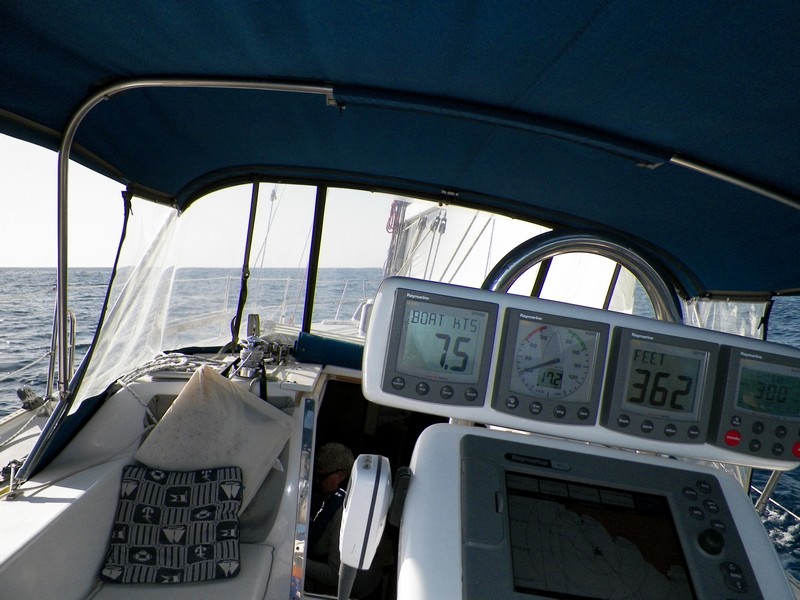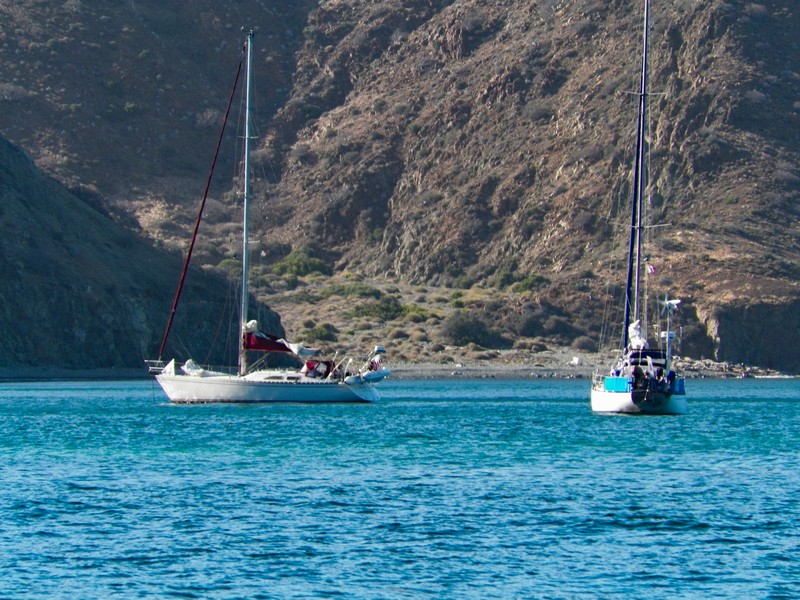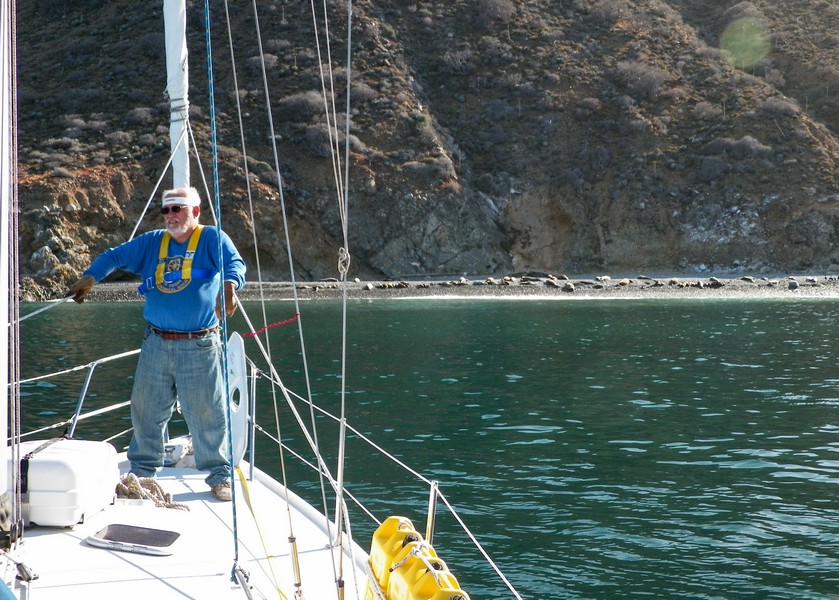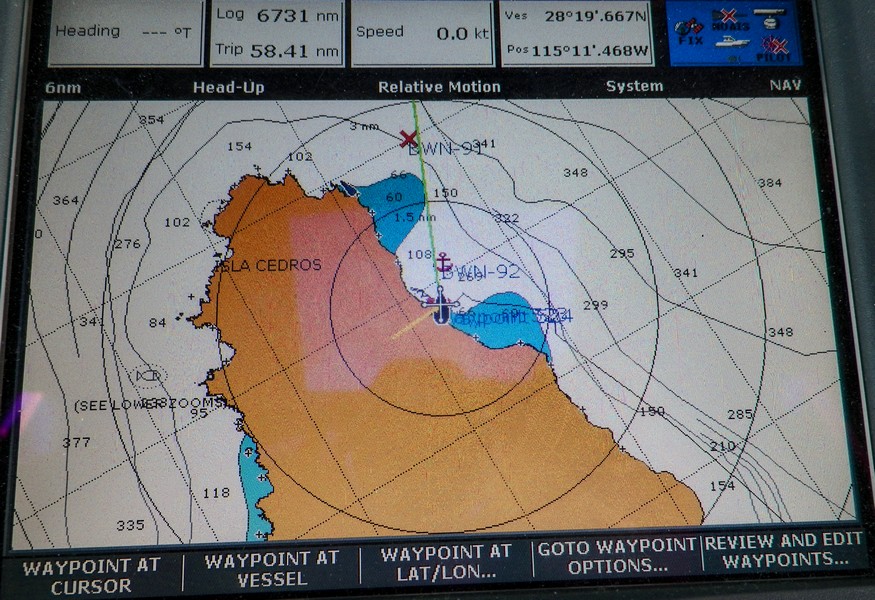Sunday, 11 May 2015 – After checking the weather, we left Turtle bay at 5:00 a.m. and headed out of the bay in calm conditions. Once out of the shelter of the bay, we hit long ocean swells and some slight wind which steadily increased to 12-15 knots as we headed toward our first major point, Punta Eugenia. Here, we made a turn to pass through the Dewey Channel before making another course adjustment toward Cedros Island. We were accompanied by two other sailboats who had also left Turtle Bay an hour or so after us. As they were larger and faster than Hilbre, they had overtaken us between Punta Rompiente and Punta Eugenia. Staying in VHF contact, we shared weather conditions as we all headed north.
Crossing the Keller Channel proved challenging with 20+ knot winds and a strong beam sea. However, with a reefed Mainsail and Genoa we spent 3 hours sailing hard at over 7 knots taking a lot of water over the bow as we plunged into heavy seas. Because of the conditions, we expected 30+ knot winds north of Cedros so we decided to head to the north anchorage which is in the Lee of Cedros Island. Once in the Lee of the Island, we encountered flat water as we headed north about a mile offshore from the Island. We did manage to use the Banda Ancha to download the latest GRIB weather files from the Internet as we passed the village of Cedros.
Just before the north anchorage, a series of Arroyos cut across the island and we suddenly found ourselves in 20+ knots of wind which increased to gusts of almost 30 knots and for a while we had some great sailing as we plowed north toward the anchorage. At 2:30 pm. we were in the Lee of Cedros having covered 42 miles.
One of the other sailboats already rounding the north end of Cedros had reported encountering heavy seas with 35+ knots of wind on the ‘nose’ and breaking seas so both boats ahead of us decided to retreat to the north anchorage overnight. By 6:00 p.m. we were securely anchored with the other two sailboats. We had covered 59 miles at an average speed of four and a half knots.
The north anchorage consists of a series of small beaches, a few at the head of Arroyos. We did encounter some strong wind gusts of 15-20 knots while at anchor, but these died after sunset. Each of the beaches support a colony of Sea Lions. A small ledge, just off each beach provides 25-30 feet of water for anchoring but the ledge does drop off steeply. It is easy to get blown off the ledge, so we sat anchor watch overnight to the accompaniment of the Sea Lions barking on the beach. An almost full moon provided plenty of light overnight.

